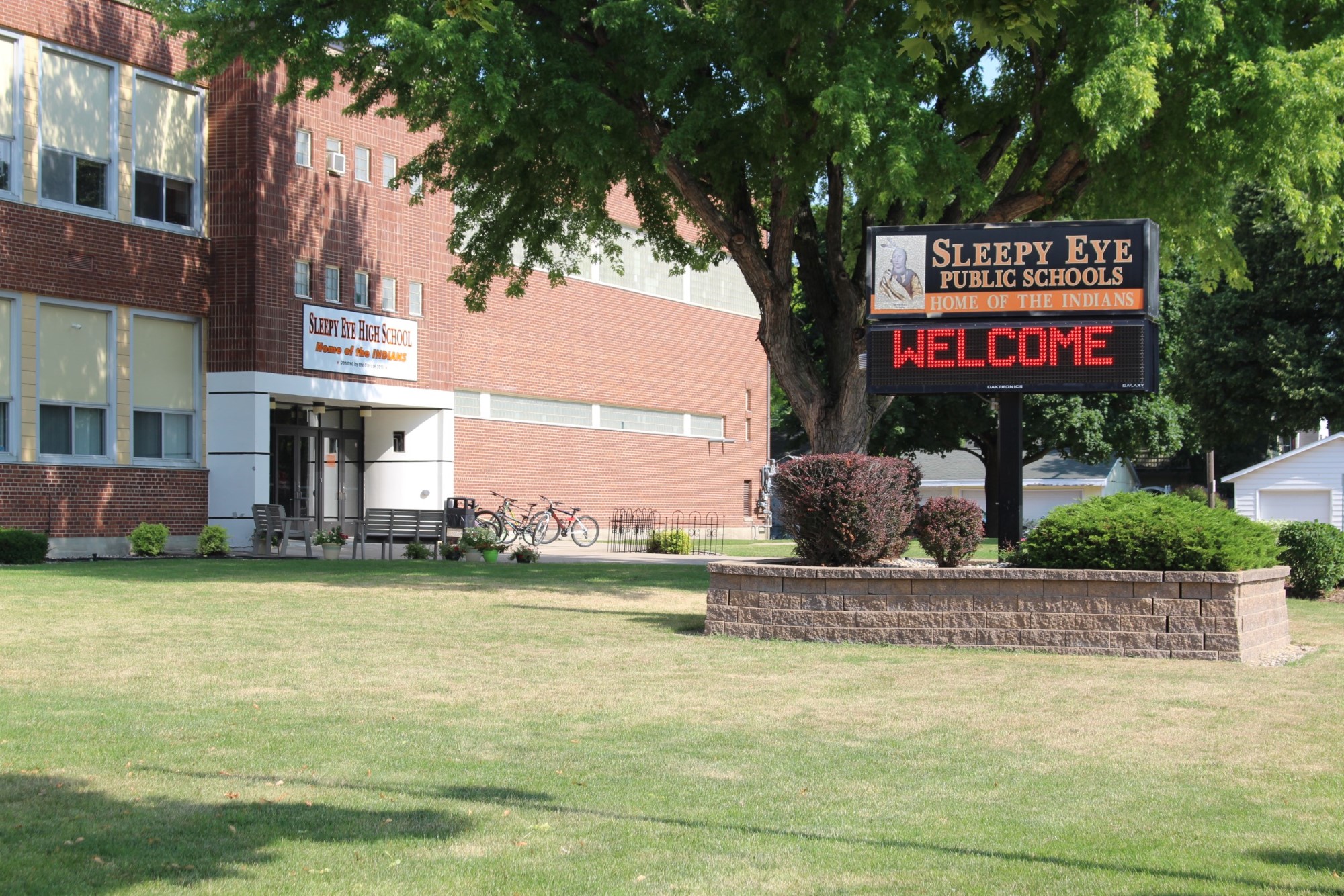Adopted: 5-11-00 MSBA/MASA Model Policy 904
Orig. 1995
Revised: 7-12-12 Rev. 2002
904 DISTRIBUTION OF MATERIALS ON SCHOOL DISTRICT PROPERTY BY NONSCHOOL PERSONS
I. PURPOSE
The purpose of this policy is to provide for distribution of materials appropriate to the school setting by nonstaff and nonstudents on school district property in a reasonable time, place, and manner which does not disrupt the educational program nor interfere with the educational objectives of the school district.
II. GENERAL STATEMENT OF POLICY
A. The school district intends to provide a method for nonschool persons and organizations to distribute materials appropriate to the school setting, within the limitations and provisions of this policy.
B. To provide for orderly and nondisruptive distribution of materials, the school board adopts the following regulations and procedures.
III. DEFINITIONS
A. “Distribution” means circulation or dissemination of materials by means of handing out free copies, selling or offering copies for sale, accepting donations for copies, posting or displaying materials, or placing materials in internal staff or student mailboxes.
B. “Materials” includes all materials and objects intended by nonschool persons or nonschool organizations for distribution. Examples of nonschool-sponsored materials include but are not limited to leaflets, brochures, buttons, badges, flyers, petitions, posters, underground newspapers whether written by students, employees or others, and tangible objects.
C. “Nonschool person” means any person who is not currently enrolled as a student in or employed by the school district.
D. “Obscene to minors” means:
1. The average person, applying contemporary community standards, would find that the material, taken as a whole, appeals to the prurient interest of minors of the age to whom distribution is requested;
2. The material depicts or describes, in a manner that is patently offensive to prevailing standards in the adult community concerning how such conduct should be presented to minors of the age to whom distribution is requested, sexual conduct such as intimate sexual acts (normal or perverted), masturbation, excretory functions, and lewd exhibition of the genitals; and
3. The material, taken as a whole, lacks serious literary, artistic, political, or scientific value for minors.
E. “Minor” means any person under the age of eighteen (18).
F. “Material and substantial disruption” of a normal school activity means:
1. Where the normal school activity is an educational program of the school district for which student attendance is compulsory, “material and substantial disruption” is defined as any disruption which interferes with or impedes the implementation of that program.
2. Where the normal school activity is voluntary in nature (including school athletic events, school plays and concerts, and lunch periods) “material and substantial disruption” is defined as student rioting, unlawful seizures of property, conduct inappropriate to the event, participation in a school boycott, demonstration, sit-in, stand-in, walk-out, or other related forms of activity.
In order for expression to be considered disruptive, there must exist specific facts upon which the likelihood of disruption can be forecast, including past experience in the school, current events influencing student activities and behavior, and instances of actual or threatened disruption relating to the written material in question.
G. “School activities” means any activity sponsored by the school, including but not limited to, classroom work, library activities, physical education classes, official assemblies and other similar gatherings, school athletic contests, band concerts, school plays, other theatrical productions, and in-school lunch periods.
H. “Libelous” is a false and unprivileged statement about a specific individual that tends to harm the individual’s reputation or to lower him or her in the esteem of the community.
IV. GUIDELINES
A. Nonschool persons and organizations may, within the provisions of this policy, be granted permission to distribute, at reasonable times and places as set forth in this policy, and in a reasonable manner, materials and objects which are appropriate to the school setting.
B. Requests for distribution of materials will be reviewed by the administration on a case-by-case basis. However, distribution of the following materials is always prohibited. Material is prohibited that:
1. is obscene to minors;
2. is libelous;
3. is pervasively indecent or vulgar or contains any indecent or vulgar language or representations, with a determination made as to the appropriateness of the material for the age level of students to which it is intended;
4. advertises any product or service not permitted to minors by law;
5. advocates violence or other illegal conduct;
6. constitutes insulting or fighting words, the very expression of which injures or harasses other people (e.g., threats of violence, defamation of character or of a person’s race, religious, or ethnic origin);
7. presents a clear and present likelihood that, either because of its content or the manner of distribution, it will cause a material and substantial disruption of the proper and orderly operation and discipline of the school or school activities, will cause the commission of unlawful acts or the violation of lawful school regulations.
C. Permission for nonschool persons to distribute materials on school district property is a privilege and not a right. In making decisions regarding permission for such distribution, the administration will consider factors including, but not limited to the following:
1. whether the material is educationally related;
2. the extent to which distribution is likely to cause disruption of or interference with the school district’s educational objectives, discipline, or school activities;
3. whether the materials can be distributed from the office or other isolated location so as to minimize disruption of traffic flow in hallways;
4. the quantity or size of materials to be distributed;
5. whether distribution would require assignment of school district staff, use of school district equipment, or other resources;
6. whether distribution would require that nonschool persons be present on the school grounds;
7. whether the materials are a solicitation for goods or services not requested by the recipients.
V. TIME, PLACE, AND MANNER OF DISTRIBUTION
If permission is granted pursuant to this policy for the distribution of any materials, the time, place, and manner of distribution will be solely within the discretion of the administration, consistent with the provisions of this policy.
VI. PROCEDURES
A. Any nonschool person wishing to distribute materials must first submit for approval a copy of the materials to the administration at least five days in advance of desired distribution time, together with the following information:
1. Name and phone number of the person submitting the request.
2. Date(s) and time(s) of day of requested distribution.
3. If material is intended for students, the grade(s) of students to whom the distribution is intended.
4. The proposed method of distribution.
B. The administration will review the request and render a decision. The administration will assign a location and method of distribution and will inform the persons submitting the request whether nonschool persons may be present to distribute the materials. In the event that permission to distribute the materials is denied or limited, the person submitting the request should be informed in writing of the reasons for the denial or limitation.
C. Permission or denial of permission to distribute material does not imply approval or disapproval of its contents by either the school, the administration of the school, the school board, or the individual reviewing the material submitted.
D. In the event that permission to distribute materials is denied, the nonschool person or organization may request reconsideration of the decision by the superintendent. The request for reconsideration must be in writing and must set forth the reasons why distribution is desirable and in the interest of the school community.
VII. VIOLATION OF POLICY
Any party violating this policy or distributing materials without permission will be directed to leave the school property immediately and, if necessary, the police will be called.
VIII. IMPLEMENTATION
The school district administration may develop any additional guidelines and procedures necessary to implement this policy for submission to the school board for approval. Upon approval by the school board, such guidelines and procedures shall be an addendum to this policy.
[Note: School districts are encouraged to consider additional guidelines which reflect varied local practices relating to this subject matter, including addressing the subject of consistency and uniformity for approving or disapproving practices under this policy.]
Legal References: U. S. Const., amend. I
Hazelwood School District v. Kuhlmeier, 484 U.S. 260, 108 S.Ct. 562, 98 L.Ed.2d 592 (1988)
Doe v. South Iron R-1 School District, 498 F.3d 878 (8th Cir. 2007)
Bystrom v. Fridley High School, 822 F.2d 747 (8th Cir. 1987)
Cornelius v. NAACP Legal Defense and Educational Fund, Inc., 473 U.S. 788, 105 S.Ct. 3439, 87 L.Ed.2d 567 (1985)
Perry Education Ass’n v. Perry Local Educators’ Ass’n, 460 U.S. 37, 103 S.Ct. 948, 74 L.Ed.2d 794 (1983)
Roark v. South Iron R-1 School Dist., 573 F.3d 556 (8th Cir. 2009)
Victory Through Jesus Sports Ministry Foundation v. Lee’s Summit R-7 School Dist., 640 F.3d 329 (8th Cir. 2011)
Cross References: MSBA/MASA Model Policy 505 (Distribution of Nonschool-Sponsored Materials on School Premises by Students and Employees)
MSBA/MASA Model Policy 512 (School-Sponsored Student Publications)

